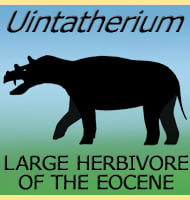Sphenacodon
In Depth Although it did not have the large sail supporting spines that other pelycosaurs like Dimetrodon, Secodontosaurus, Ctenospondylus and Edaphosaurus had, Sphenacodon still possessed enlarged neural spines rising from its vertebrae. These are considered to have been the supports for powerful dorsal muscles that would allow Sphenacodon to undertake powerful strikes towards is prey, … Read more
